AMC AMX classic cars for sale
The AMC AMX, manufactured between 1968 and 1970, is a two-seater muscle car that stands out with its distinctive engineering, high-output V8 engines, and strong performance figures. Unique among its American contemporaries, the AMX challenges the Corvette, delivers robust racing results, and remains a technical highlight from AMC's lineup.
Search results
Currently, there are no matching listings for your search.
Create search alert
Let yourself be notified as soon as a listing is published that matches your search filters.
AMC AMX listing references from Classic Trader
Below you will find listings related to your search that are no longer available on Classic Trader. Use this information to gain insight into availability, value trends, and current pricing for a "AMC AMX" to make a more informed purchasing decision.
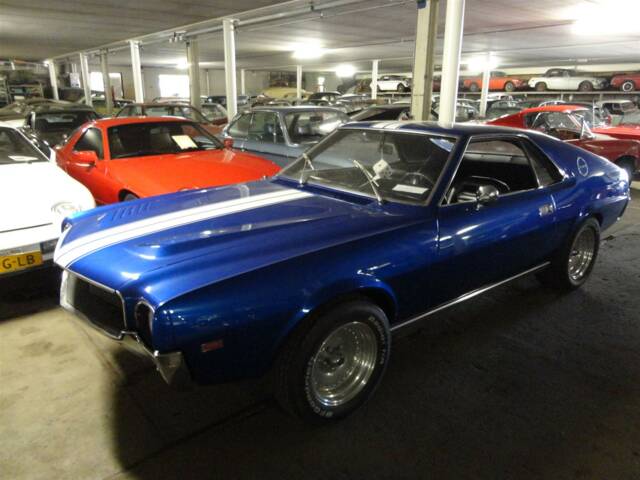
1969 | AMC AMX
AMX / AMC-Fastback coupe blue
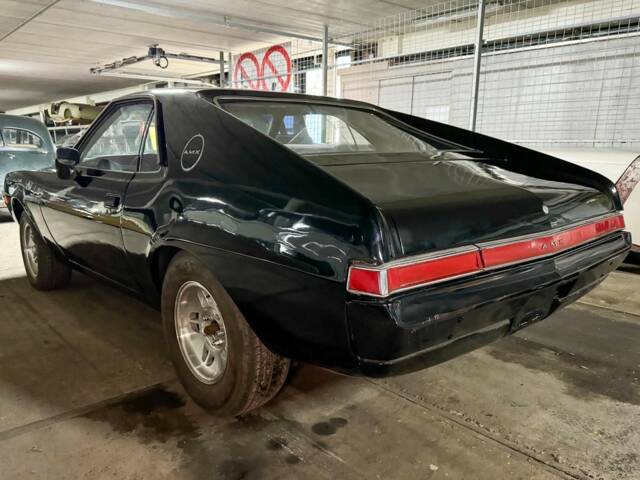
1969 | AMC AMX
AMX / AMC-390 black
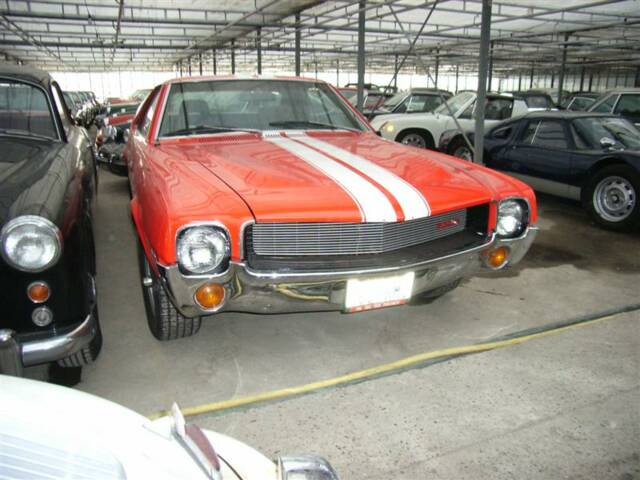
1969 | AMC AMX
AMX / AMC-AMX red 5206
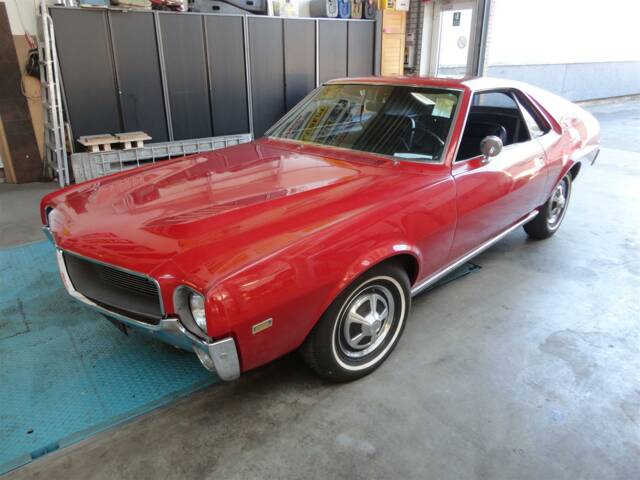
1968 | AMC AMX
AMX / AMC-''68 red 290
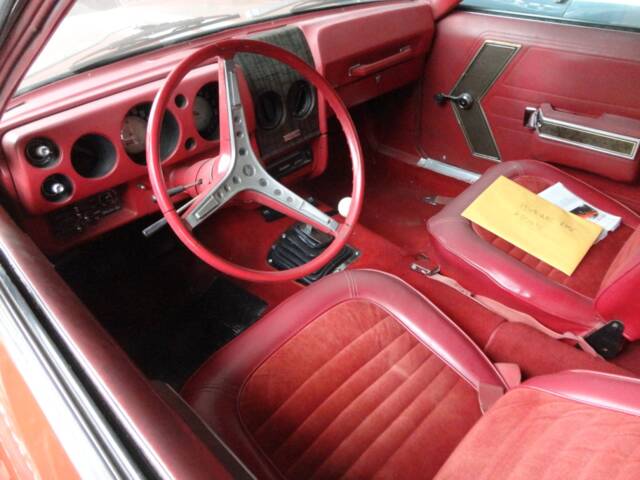
1969 | AMC AMX
AMX / AMC-AMX 390 V8
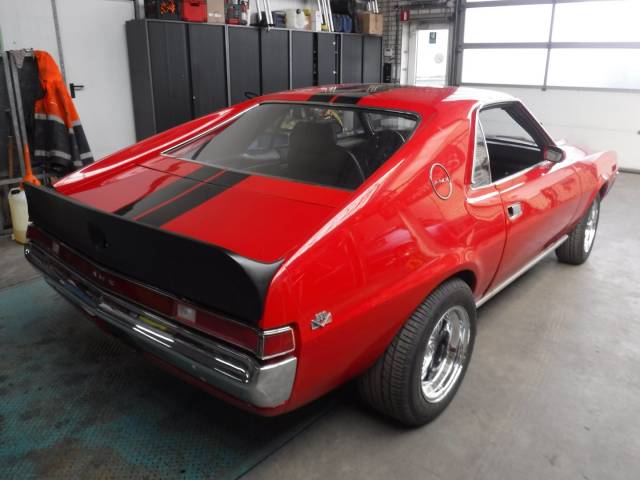
1969 | AMC AMX
AMX / AMC-AMX 390

1969 | AMC AMX
AMX Coupé Sport Big Bad Green - « Muscle Car »
Create search alert
Let yourself be notified as soon as a listing is published that matches your search filters.
Introduction and history of the AMC AMX
Launched at the Daytona International Speedway in February 1968, the AMC AMX was American Motors Corporation’s ambitious entry into the two-seat muscle car segment. Developed at a time when the brand sought younger and more performance-oriented customers, the AMX name stood for 'American Motors Experimental.' The AMX’s brief production run, from 1968 to 1970, made it a standout with just over 19,000 units built. Its steel-bodied, short-wheelbase coupe layout was a first in American automotive circles for over a decade, allowing AMC to position the AMX as a direct alternative to the Chevrolet Corvette—but at a more accessible price point. The AMX soon carved out a reputation for advanced engineering and safety, pioneering features such as a one-piece injection-moulded dashboard for improved crash protection. The model claimed consecutive 'Best Engineered Car of the Year' awards in 1969 and 1970, further cementing its place in US automotive history.
Model history
The AMX was derived from the AMC Javelin, itself launched in 1967, but differed by chopping the rear seat and shortening the wheelbase by about an inch for more focused handling and a true two-seater experience. As a result, the AMX was one of only two American two-seaters at the time. Model-year changes were rapid: 1969 brought new colours and special models, while 1970 saw added luxuries like optional leather upholstery, higher output engines, and unique paint finishes. The predecessor to the AMX was the AMC Javelin, and after 1970, the AMX name lived on as a sporty trim for later Javelin generations, but the dedicated two-seater was not continued.
Highlights of the AMC AMX
The AMC AMX distinguished itself through both its structure and its mechanicals. Its all-steel body construction and single-piece dash set new standards for safety among American sports cars. Available with robust V8 engines—ranging from 4.8 to 6.4 litres and up to 330 hp—the AMX offered true muscle car acceleration. In period testing, 0 to 60 mph was covered in 6.5 to 6.6 seconds, while the standing quarter mile was dispatched in just over 14 seconds. Options like Hurst-tuned transmissions and double exhausts further underscored its focus on performance. With a fixed rear quarter window and coupe body, the AMX firmly differentiated itself from the larger Javelin hardtop. It also enjoyed racing credentials, competing at major events such as Pikes Peak and SCCA championships.
Technical data
Special Editions and Collectible Models
The rarest and most collectible edition of the AMC AMX is the SS/AMX Drag Racer, modified by Hurst for drag strip competition, with just 52 examples produced. Other notable limited versions include the Playmate AMX and the California 500 model, each featuring bespoke paint, finishes, or equipment tailored to enthusiasts and collectors. The 1970 lineup introduced additional exclusivity through luxury trims and customisable options.
Weak Spots and Common Issues
No documented weak spots or common issues are available in current literature and seller feedback. As with many American V8 muscle cars, potential buyers should always inspect for rust, transmission health, and interior wear, but specific AMX-related chronic faults are unreported in the provided data.
Engine and Performance, Transmission and Handling
The AMC AMX delivered standout straight-line speed due to its high-powered V8s and relatively light weight for an American coupe of the era. Standard suspension included reinforced torsion bars, thickened tyres, and limited-slip differentials for enhanced grip and acceleration. Racing exploits underline the model’s credibility: Factory and privateer AMXs competed successfully at national level racing events such as Pikes Peak and SCCA rounds. The combination of 4-speed manual transmission and robust power output made the 6.4-litre, 330 hp variant especially prized among performance enthusiasts, with period tests recording 0–100 km/h in as little as 6.5 seconds and quarter-mile passes just over 14 seconds. Optional automatic transmissions (3-speed) were aimed at a broader range of customers who preferred comfort over outright engagement. Prominent variants include the SS/AMX Hurst drag racer (52 units, highly valued), the standard 6.4-litre V8 (330 hp) manual models, and the luxury-trimmed 1970 AMX. These stand out for their performance, rarity, or unique features.
Interior, Comfort, Exterior and design
Styling for the AMX is credited to designer Richard A. Teague, who gave the car its muscular proportions and tasteful simplicity. Key features include a broad, aggressive coupe silhouette with fixed rear quarter windows, robust chrome bumpers, and traditional American muscle car cues. Paint schemes often featured signature racing stripes over bold hues. Inside, late models could be specified with leather upholstery and luxury trim, while an injection-moulded dashboard elevated safety standards. Accessories included thicker wheels and tyres, specific to the model’s performance role. Overall, the restrained, compact designer look set the AMX apart from more flamboyant contemporaries.
Other relevant features
Many AMXs featured factory double exhausts as standard, accentuating both performance and the deep burble of its V8 engines. Power front disc brakes and optional limited-slip differentials could be found on select models, supporting spirited driving both on track and road.
Summary
The AMC AMX remains a high-water mark for American Motors, blending competition-grade engineering with distinctive design and serious V8 performance. Its brief production ensures rarity, while features like the all-steel body, one-piece dashboard, and racing pedigree set the AMX apart from rivals. With strong demand matching its exclusive supply, the AMX commands a unique place in US muscle car heritage.